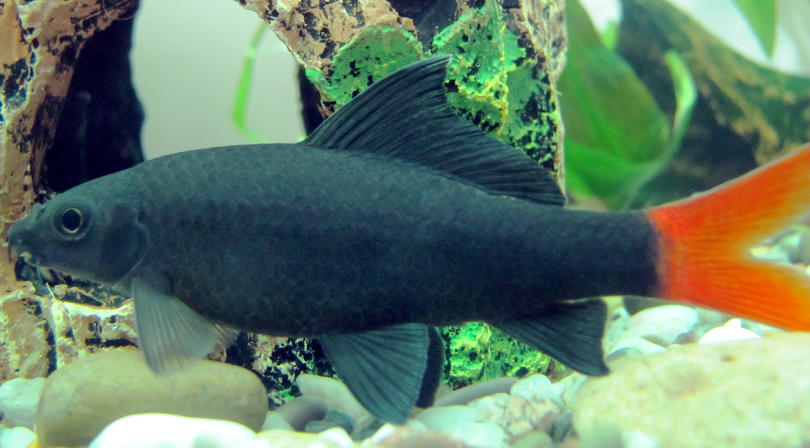The Aquarium Trade's Impact on Wild Freshwater Fish
ON 10/19/2025 AT 03:46 PMThe international aquarium trade contributes to the demise of many species and the conservation of some species.

The freshwater aquarium trade, a subset of the global ornamental fish industry worth billions, supplies hobbyists with vibrant species from rivers, lakes, and streams worldwide. While it promotes appreciation for aquatic biodiversity, it often contributes to the endangerment and extinction of wild populations through overcollection, habitat disruption, and inadequate regulations. Freshwater fish, comprising approximately 90% of traded ornamentals, face acute threats, with nearly a third of all species threatened globally due to combined pressures like habitat loss, pollution, and overexploitation. This issue is particularly pronounced in biodiverse hotspots like the African Rift Lakes—Malawi, Tanganyika, and Victoria—where cichlids, prized for their colors and behaviors, illustrate the trade's dual role as both a driver of decline and a potential conservation tool.
The trade is wild saltwater fish also has a major negative impact, but will be addressed in a future article.
Over-collection from the wild is a primary mechanism by which the trade harms freshwater species. Many freshwater fish are captured directly from habitats, depleting local populations, especially those with slow reproduction or restricted ranges. For instance, the zebra pleco (Hypancistrus zebra) from Brazil's Xingu River has been pushed to Critically Endangered status by aquarium demand, compounded by dams and habitat destruction. Brazil's 2004 export ban has not fully stemmed illegal trade, with high prices fueling smuggling. Similarly, the red-tailed black shark (Epalzeorhynchos bicolor) from Thailand is extinct in the wild, largely due to overharvesting for aquariums alongside agricultural pollution. In India, the red-lined torpedo barb (Sahyadria denisonii) saw over 1.5 million exports between 2005 and 2012, leading to population crashes despite quotas. These examples highlight how consumer demand drives unsustainable harvesting, often in regions with weak enforcement.
The African Rift Lakes present a more intricate scenario, where the trade intersects with other threats like pollution, invasive species, and climate change, amplifying endangerment risks. These ancient lakes host extraordinary cichlid diversity—over 1,000 species in Malawi alone—evolved through adaptive radiation, making them hotspots for aquarium enthusiasts. However, overfishing for the pet trade, combined with local food fisheries and environmental degradation, threatens this biodiversity.
Lake Victoria, the youngest and largest Rift Lake, has suffered catastrophic cichlid losses, with over half of its 500+ endemic species extinct or endangered. The primary culprit is the 1950s introduction of Nile perch (Lates niloticus) for commercial fishing, which preyed on cichlids, alongside eutrophication from pollution and habitat alteration. While the aquarium trade is not the main driver here—cichlids make up less than 1% of catches—the collection of rare survivors for export exacerbates vulnerabilities. Species like Haplochromis sp. have vanished from the wild but persist in captivity, underscoring the trade's paradoxical role. Recent rediscoveries, such as Lipochromis microdon in 2025, offer hope, but ongoing threats from overcollection for international markets persist.
In Lake Malawi, home to some of the most colorful freshwater fish, overfishing for the ornamental trade directly contributes to declines. A 2018 IUCN assessment found 9% of 458 assessed species at high extinction risk. Species like Chindongo saulosi, endemic to specific rocky habitats, have been perilously overfished for the hobby, leading to population crashes. Lake Malawi's export trade, involving thousands of wild-caught cichlids annually, often lacks sustainable quotas or enforcement, compounding issues from pollution and invasive species. Collectors target juveniles for their bright colors, disrupting breeding cycles and genetic diversity.
Lake Tanganyika, the deepest and oldest Rift Lake, faces similar pressures, with overexploitation by aquarium collectors devastating cichlid populations. Pesticide runoff, sewage, and targeted harvesting for species like Tropheus duboisi have led to displacements and declines. The trade's demand for unique morphs encourages overcollection from specific sites, eroding habitat integrity. Non-native introductions via escaped ornamentals further threaten natives, as seen with invasions from the pet trade.
This complexity arises because the trade can also aid conservation. Hobbyists have preserved over 30 freshwater species extinct in the wild, including Rift Lake cichlids, through captive breeding programs. Initiatives like the Stuart M. Grant Cichlid Conservation Fund support reintroductions and habitat protection. In Lake Victoria, aquarists maintain genetic lines for potential restocking. Yet, this "ark" function is limited and captive populations may lose adaptations needed for survival in nature. Inbreeding and genetic decline is common in a number of popular captive-bred species.
With some species, such as Cardinal Tetra (Paracheirodon axelrodi) in the Rio Negro in the Amazon basin, wild harvesting has compelled locals to protect habitat for a sustainable livelihood. Project Piaba has helped ensure that habitat is protected while supporting over 1,000 families from US$4-5 million in revenue and protected some 46,000 square miles of rainforest.
The Cardinal Tetras captured actually have a better chance at a longer life in the aquarium trade because most of them would die in the wild during the annual dry season, while in captivity they have a chance of living out their full lifespan of 2-3 years.
High mortality in the supply chain—up to 80% for some freshwater species—intensifies pressure, as more wild fish are harvested to compensate. Illegal trade and poor data tracking in major importers like the U.S. allow threatened Rift Lake species to enter markets unlabeled. Climate change exacerbates these issues, altering lake levels and water chemistry.
A substantial factor in the demise of many native fish species are invasive species introduced by aquarists, ornamental fish farms or aquaculture operations. In Florida, many freshwater bodies are now inhabited primarily by exotic species which have displaced native species.
To mitigate harms, stricter CITES listings, sustainable aquaculture, and consumer preference for captive-bred fish are essential. The aquarium trade's future lies in transforming from a threat to a steward, ensuring these aquatic wonders endure in their native waters.
If you have questions about the potential impact of adopting a fish or other aquatic being, ask our resident AI, Aquatica, or send us a message through our contact form for a human response.